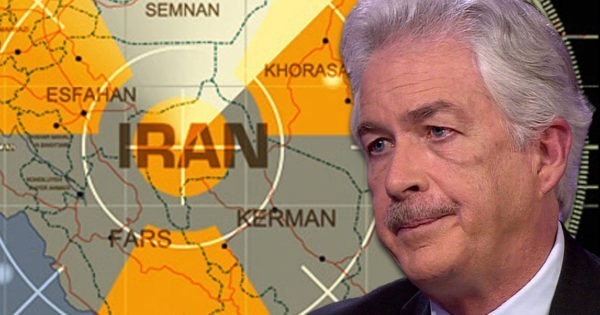
Joe Biden has announced that the chief facilitator to the creation of the incredibly one-sided Iran nuclear deal, if confirmed, will be his pick for director of the Central Intelligence Agency.
William Burns, the chief facilitator and negotiator for the Obama administration in the crafting of the pro-Iran nuclear deal is set to become CIA director in the upcoming Biden administration.
Burns, the current president of the Carnegie Endowment for Peace, served as the US ambassador to Jordan under President Obama and Special Assistant to Secretaries Warren Christopher and Madeleine Albright under President Clinton.
Burns played a leading role in the failed Russian “reset” efforts Under Secretary of State Hillary Clinton during the early days of the Obama administration.
Biden’s pick for head of the CIA led the clandestine “back channel” negotiations with the Iranian regime that resulted in the Iran nuclear deal. In selecting Burns, the President-Elect is further signaling that he will follow-through in his commitment to rejoining the controversial deal.
The Trump administration rescued the United State from the horribly one-sided deal left in May of 2018.
William Burns the Joe Biden’s pick for CIA director, led the secretive “back channel” with the Iranian regime during the lead up to the Iran nuclear deal.https://t.co/lh8dxpphML
— Laura Ingraham (@IngrahamAngle) January 12, 2021
Opponents of the deal – including Democrat Sens. Chuck Schumer (NY), Bob Menendez (NJ), Ben Cardin (MD), and Joe Manchin (WV), refused to back the deal saying it did not properly restrain Iran’s nuclear aspirations, address the Iranian’s funding of terrorism, or put in place adequate international inspection oversight.
When the Senate brought the deal up for a vote in September of 2015, it failed 58 to 42. The Obama administration refused to take no for an answer and implemented it nevertheless.
In the deal negotiated by Burns, Iran received billions in cash. The Obama administration flew a jet carrying $400 million in euros and Swiss francs to Tehran in January of 2016 in exchange (read: ransom) for the release of four Americans being held in the Islamic Republic of Iran.
The US surrendered an additional $1.3 billion in taxpayer dollars to the Iranian mullahs, to – allegedly – settle outstanding “claims.” The deal also unlocked over $150 billion in frozen Iranian assets.
The Obama administrations lifting of international sanctions – also part of the deal – also provided Iran with hundreds of billions in relief.
Burns wrote in his book, The Back Channel: A Memoir of American Diplomacy and the Case for Its Renewal, that “the IAEA and the US intelligence community repeatedly affirmed Iranian compliance,” but he acknowledged that “Iran continued to export instability across the Middle East, exploiting and accelerating chaos in Syria and Yemen.”
It was later confirmed that Iran had obstructed UN and IAEA inspectors in its continuation of the development of nuclear weapons capabilities.
Biden's choice for CIA director,
William Burns, has long argued that the nuclear deal actually makes Israel safer, despite Israel's long-standing, vocal objections to it. | https://t.co/R6K2gi0GcY— Mike (@Doranimated) January 11, 2021
Mr. Biden has reaffirmed his decision to rejoin the Iran deal saying, “[I]n consultation with our allies and partners, we’re going to engage in negotiations and follow-on agreements to tighten and lengthen Iran’s nuclear constraints, as well as address [their] missile program.”
The Iranian government announced it has resumed its 20 percent uranium enrichment earlier this month. Iran’s Parliament also passed a law late in 2020 that blocks IAEA inspections of nuclear sites. That obstruction will start one month into the Biden administration should US sanctions not be lifted.